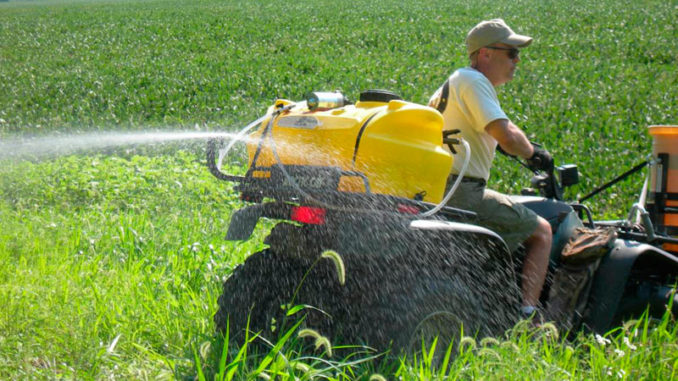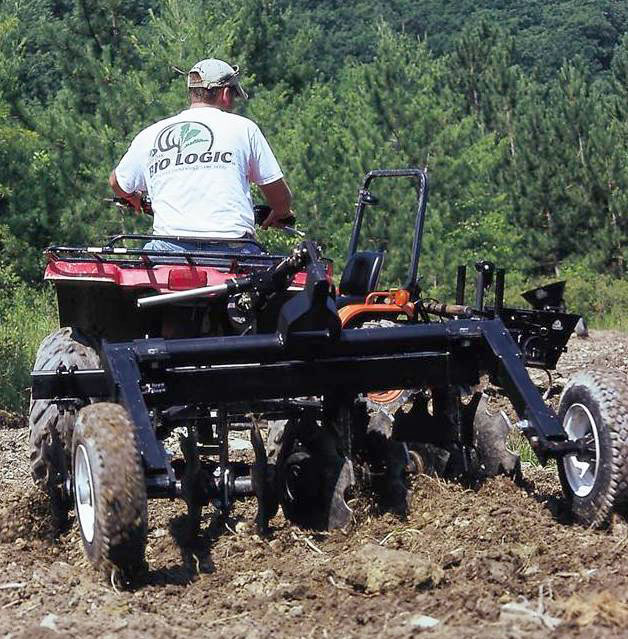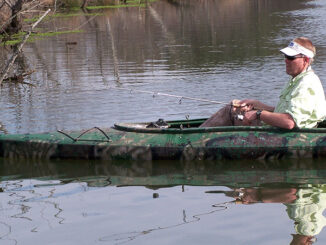
Food plots don’t happen automatically
It may be hot and sweltering outside, but the fall planting is just around the corner. Landowners always need to be ready to implement food plot preparation tactics throughout the year.
One of the most important aspects of developing a rockstar set of food plots is controlling competition. Through a series of mechanical and chemical methods, we can control competition. This should always be a part of the food plot program whether planting during warm or cool seasons.
Why is controlling competition so important? Well, it may seem counter intuitive to kill off existing green vegetation prior to planting something new. To some, adding new forage to an existing green field can be the perfect duty to enhance an existing green food source.
But all green plants aren’t created equal to say the least. In fact, many grasses and weeds only provide marginal nutritional value if any at all. And this couldn’t be any truer for late summertime vegetation that has become well established in open fields and former food plots.
An established crop of grass and native or exotic weeds often provides little nutritional value for deer and other foraging wildlife. And when landowners are trying to cultivate a new forage crop for the fall hunting season, a clean site, clear of other established vegetation, is one step in the right direction.
It’s about food value
Throughout the year different types of vegetation grow and will persist in certain areas. Typically, the available vegetation in August has been well established from summer heat and routine rainfall. And any food value is generally severely diminished in these areas usually covered in mostly undesirable species.
The undesirable vegetation that is already well established will compete heavily with newly planted seeds. So they must be removed prior to planting. Established vegetation will compete for space and sunlight. And the root systems will also suck up any available nutrients and available water preventing the new seeds from having a good start.
Basically, existing vegetation can be either mechanically or chemically destroyed. Most farmers will mechanically turn up the soil and the existing plants to kill them by using a disk harrow, chisel plow, or sometimes even a turn plow. The mechanical efforts dry out roots and can severely disturb growth and sustainability. Yet, sometimes poor plow performance and soil types that can retain moisture, will not kill all of the vegetation impacted by the physical destruction methods. Mechanical treatment alone isn’t always the best way to kill off competing vegetation prior to planting a fall food plot.
Chemical control through herbicides is the best way to kill plants. Essentially, herbicides will inhibit photosynthesis, cell wall production, or some other biological process critical for plant growth and survival. Herbicide use is the best way to control competing vegetation on sites where an established, noxious plant community is present. Or herbicides prior to planting can be used to just restart the food plot. This kills off any preferred species as well to start off with a clean seed bed too.
Glyphosate is a food plot’s friend

For the best results, a full spectrum herbicide should be used to attack both woody and herbaceous vegetation.
While a variety of full spectrum herbicides are available, glyphosate is the most readily available and most effective chemical killer of woody and herbaceous vegetation. Glyphosate was first registered in 1974. It is the most widely-used herbicide in the nation. This herbicide disrupts protein production that is required for plant growth. And while glyphosate can bind to soil for quite some time, it must enter the leaves or grass blades through the plant tissues in order to be taken up by the plant and to be effective. Glyphosate can be broadcasted, or boom sprayed over plants. Chemicals will take effect within a few hours.
A combination of both mechanical and herbaceous treatments can also be an effective way to control unwanted vegetation. An initial herbaceous treatment can be conducted followed by a mechanical treatment to turn the dead vegetation back into the soil. And if the initial herbicide treatment and mechanical treatment doesn’t kill all of the weeds, a second herbaceous treatment can be applied to kill any new growth that precipitated from the mechanical treatment and germination of other weed seeds that were dormant in the soil.
Acting early is the key to controlling unwanted vegetation for a cool season planting. And August is the prime time to start controlling vegetation in food plots prior to a fall planting regime. Vegetation control is an integral part of any food plot program and controlling competition prior to planting season will give the food plot a head start to have rich foods available for the fall and winter season.





Be the first to comment